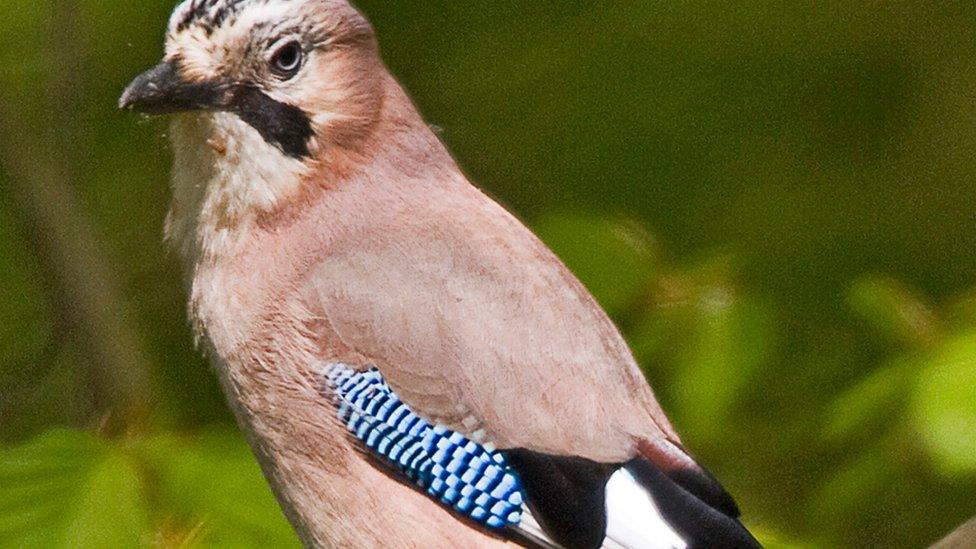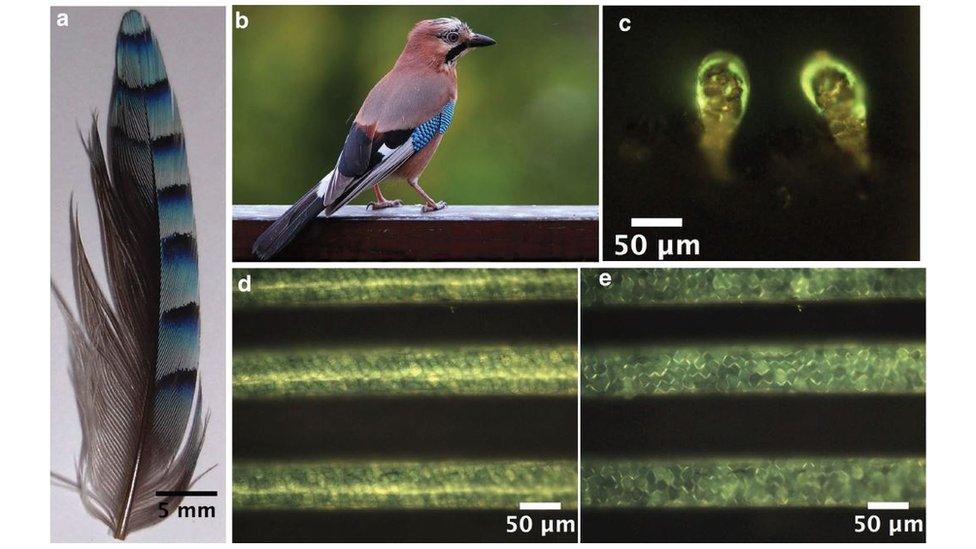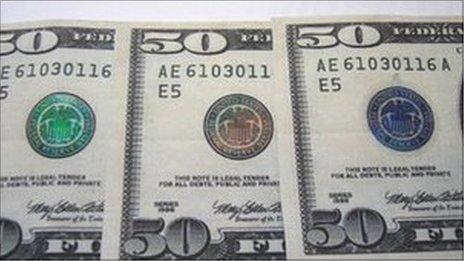Scientists find 'key to long-lasting colour' in bird feathers
- Published

Researchers at the University of Sheffield Physics and Astronomy department found the colour in jays' feathers is generated via its structure rather than pigment
A discovery of why birds' feathers do not go grey as they age could lead to a new generation of fade-proof paint and clothing, scientists say.
The Sheffield University team looked at how the colours are created in the blue-and-white feathers of the jay.
They found the colours come from the way the feathers are structured rather than from pigments, like in human hair.
Researchers believe the discovery could allow the creation of long-lasting coloured coatings.
The publication Nature Scientific Reports said the team studied feathers in the Natural History Museum's collection in London.

The scientists used specialist X-ray equipment to analyse jay feather - including cross sections of the light blue part of the feather
The research team found that instead of using dyes that would fade over time, the birds use well-controlled changes to the small cells to create their vividly coloured feathers, which are possibly used for jays to recognise one another.
The jay is able to pattern these different colours along an individual feather barb - the equivalent of having many different colours along a single human hair, said the scientists.
Long-lasting colours
Andrew Parnell, from Sheffield University's department of physics and astronomy, said: "This discovery means that in the future, we could create long-lasting coloured coatings and materials synthetically.
"We have discovered it is the way in which it is formed and the control of this evolving nanostructure [small cells] - by adjusting the size and density of the holes in the sponge-like structure - that determines what colour is reflected.
"Current technology cannot make colour with this level of control and precision - we still use dyes and pigments.
"Now we've learnt how nature accomplishes it, we can start to develop new materials such as clothes or paints using these nano-structuring approaches.
"It would potentially mean that if we created a red jumper using this method, it would retain its colour and never fade in the wash."
In 2011, Sheffield scientists developed a material which mimics the rainbow effect of butterfly wings to help the fight against counterfeit money.
- Published19 May 2011
